-
Storing renewable energy underground for a reliable, affordable national grid
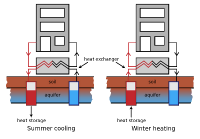
A common criticism of a total transition to renewable energy — wind, water, and solar power — is that the U.S. electrical grid cannot affordably store enough standby electricity to keep the system stable. Researchers propose an underground solution to that problem. The researchers use data from single-state calculations of the number of wind, water, and solar generators potentially needed in each state to show that these installations can theoretically result in a reliable, affordable national grid when the generators are combined with inexpensive storage and “demand response” — a program in which utilities give customers incentives to control times of peak demand.
-
-
Equatorial regions’ power at risk from stormy space weather

Stormy space weather sweeping across the equator is threatening vital power grids in regions long considered safe from such events, ground-breaking new research reveals. The researchers found that these equatorial electrical disruptions threaten power grids in Southeast Asia, India, Africa, and South America, where protecting electricity infrastructure from space shocks has not been a priority.
-
-
U.S. enhances national space-weather preparedness
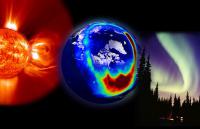
Space-weather events are naturally occurring phenomena in the space environment that have the potential to disrupt technologies and systems in space and on Earth. These phenomena can affect satellite and airline operations, communications networks, navigation systems, the electric power grid, and other technologies and infrastructures critical to the daily functioning, economic vitality, and security of the United States. The White House Office of Science and Technology Policy said that that is why the administration the other day released a National Space Weather Strategy and National Space Weather Action Plan, and announced new commitments from the federal and non-federal sectors to enhance national preparedness for space-weather events.
-
-
How bad will this El Niño be? Worse than you may think
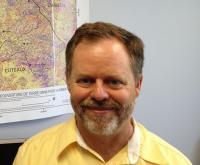
Last week, Columbia University Earth Institute’s International Research Institute on Climate and Society convened a 2-day workshop reflecting on efforts over the past twenty years to improve responses to climate variability, especially risks associated with El Niño. Concerns that the current El Niño has the potential to exceed in severity the devastating El Niño of 1997-98 permeated the discussion. At the conference, Marc A. Levy of the Earth Institute presented a brief overview of the social, economic, and political changes that will have a large effect on human impacts from El Niño. He amplifies those remarks here.
-
-
At the nanoscale, concrete proves effective for nuclear containment

One of the main challenges faced by the nuclear industry is the long-term confinement of nuclear waste. Concrete is one of the barrier materials commonly used to contain radionuclides, both in nuclear reactors and nuclear waste-storing facilities. New research shows concrete is a strong choice for the long-term confinement of nuclear waste.
-
-
“Iconic” El Niño may bring more than rain to California
A few weeks ago in the hills north of Los Angeles, heavy rain set off widespread mudslides that blocked roads and covered highways, burying hundreds of vehicles and bringing much of Los Angeles’ infamous traffic to a standstill. For Californians, these mudslides are just one of many recent harbingers signaling the imminent arrival of a “monster” El Niño — an El Niño that started bubbling up from unusually warm temperatures in the tropical Pacific last summer. In Southern California, a strong El Niño usually signals rain, and given that California is now in the throes of a severe drought, it seems like that should be a good thing, even if it comes with risk of floods. But the reality of climate is more complex and counter-intuitive than it first appears, and Californians should be careful what they wish for.
-
-
Small landscape changes can yield big freshwater gains
A typical bird’s-eye view of the Midwest offers a patchwork landscape covered mostly by agriculture but mottled with forest, wetland, grassland, buildings, and pavement. This pattern influences the quality and supply of the many natural benefits the landscape provides people, including freshwater. A new opportunity for improving the health and supply of Wisconsin’s lakes, waterways, and groundwater has emerged from a recent study showing that making small tweaks to how large some of those patches in the pattern are could mean big freshwater benefits, especially where making drastic changes to the landscape would be hard, as is the case throughout much of the state.
-
-
Discovery of “hidden earthquake” challenges tsunami early-warning systems

Seismologists studying the 2011 Chile earthquake have discovered a previously undetected earthquake which took place seconds after the initial rupture. This newly discovered phenomena which they have called a “closely spaced doublet” presents a challenge to earthquake and tsunami early warning systems as it increases the risk of larger-than-expected tsunamis in the aftermath of a typical subduction earthquake.
-
-
New material enables more efficient desalination
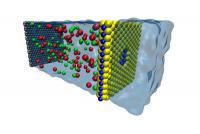
Engineers have found an energy-efficient material for removing salt from seawater. The material, a nanometer-thick sheet of molybdenum disulfide (MoS2) riddled with tiny holes called nanopores, is specially designed to let high volumes of water through but keep salt and other contaminates out, a process called desalination.
-
-
Finnish company to construct final disposal facility of spent nuclear fuel

The Finnish government has granted a license to Finnish company Posiva for the construction of a final disposal facility for spent nuclear fuel. The spent fuel assemblies will be encapsulated and placed in the bedrock at a depth of about 400 meters for permanent disposal. The waste will be stored for around 100,000 years before its level of radioactivity begins to dissipate. “This is the world’s first authorization for the final repository of used nuclear waste,” Finland’s Economy Minister Olli Rehn said.
-
-
Declining snow packs put many nations' water supplies at risk

Gradual melting of winter snow helps feed water to farms, cities, and ecosystems across much of the world, but this resource may soon be critically imperiled. Scientists have identified snow-dependent drainage basins across the northern hemisphere currently serving two billion people that run the risk of declining supplies as a result of global warming. “Water managers in a lot of places may need to prepare for a world where the snow reservoir no longer exists,” one scientist says.
-
-
Oklahoma Corporation Commission shuts down oil wells to reduce threat to Cushing oil hub

Cushing, Oklahoma, is the site of an immense oil tank farm, which presently stores fifty-four million barrels awaiting transfer to coastal refineries and plants. The tank farm is considered an integral and vital part of our national energy infrastructure. According to scientists, the integrity of the Cushing hub is now at risk because of fracking. Studies document that the recent disposal of millions of barrels of water into disposal wells, including those adjacent to the Cushing hub, have caused the rapid rise of earthquakes in Oklahoma. Oklahoma earthquakes have thus become a very real national security issue. Until federal expertise and support reaches Oklahoma, a potential human-made catastrophe could conceivably also become a national security disaster.
-
-
Greenhouse gas concentrations in the atmosphere hit another record
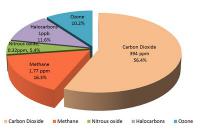
The amount of greenhouse gases in the atmosphere reached yet another new record high in 2014, continuing a relentless rise which is fueling climate change and will make the planet more dangerous and inhospitable for future generations, according to the World Meteorological Organization (WMO). The pre-industrial level of CO2 — of about 278 ppm — represented a balance between the atmosphere, the oceans, and the biosphere. Human activities such as the burning of fossil fuels has altered the natural balance, and in spring 2015, the global average concentration of CO2 crossed the 400 ppm barrier. The global annual average is likely to pass 400 ppm in 2016.
-
-
Climate change adaptation – from local initiatives to national policies
We all know that the climate is changing, but how can we best prepare for some of the changes that lie ahead? Should coastal cities change their building codes to accommodate rising sea levels? Should we allocate more resources to tree-planting to reduce urban heat islands? These are examples of local initiatives that can make a difference to climate change adaptation. Indeed, climate adaptation is a rapidly growing concern for the international community.
-
-
Quickly, inexpensively locating short circuits in power grids
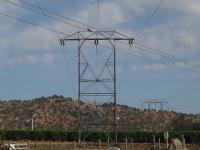
When a high-voltage power line is damaged by wind, ice, or a tree, electricity utilities must quickly find the fault location and repair it to meet the power quality requirements or avoid cascade blackout. In the common practice, they locate the fault by first identifying the section without power through the use of sensors placed at regular intervals along the power line. A technician must then go to that section and visually inspect the line in order to find the fault location. Researchers have come up with a new method, which is faster and less expensive, for precisely determining where the short circuit takes place.
-
- All
- Regional
- Water
- Biometrics
- Borders/Immig
- Business
- Cybersecurity
- Detection
- Disasters
- Government
- Infrastructure
- International
- Public health
- Public Safety
- Communication interoperabillity
- Emergency services
- Emergency medical services
- Fire
- First response
- IEDs
- Law Enforcement
- Law Enforcement Technology
- Military technology
- Nonlethal weapons
- Nuclear weapons
- Personal protection equipment
- Police
- Notification /alert systems
- Situational awareness
- Weapons systems
- Sci-Tech
- Sector Reports
- Surveillance
- Transportation
Advertising & Marketing: advertise@newswirepubs.com
Editorial: editor@newswirepubs.com
General: info@newswirepubs.com
2010-2011 © News Wire Publications, LLC News Wire Publications, LLC
220 Old Country Road | Suite 200 | Mineola | New York | 11501
Permissions and Policies
Editorial: editor@newswirepubs.com
General: info@newswirepubs.com
2010-2011 © News Wire Publications, LLC News Wire Publications, LLC
220 Old Country Road | Suite 200 | Mineola | New York | 11501
Permissions and Policies
